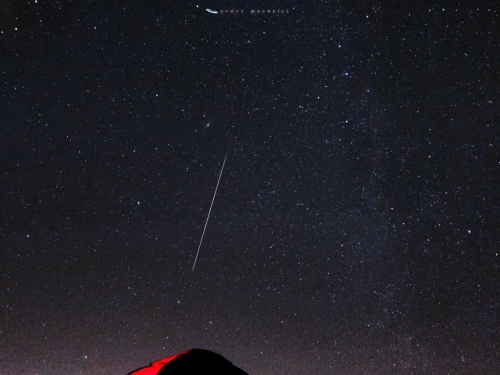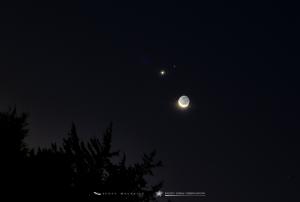
Stargazing Nights
- Where:
- Frosty Drew Observatory
- When:
- Friday December 15, 2017 CLOSED
- Cost:
- $1 Suggested Donation per Person
Tonight is Stargazing Night at Frosty Drew Observatory and forecasts are calling for snow. This will sadly keep the Observatory telescopes closed tonight. Though if you have clear skies overhead, be sure to catch the International Space Station (ISS) passing over at 6:09 p.m. ET. It will appear over the WNW horizon, rising to 27° heading towards the South. We also have practically no Moon overnight tonight, with the super thin 2% waning crescent rising at 5:35 a.m. Skies will clear nicely around 3:00 a.m., and if you’re up, step outside and catch a stunning view of the constellation Orion and the brightest star in Earth’s nighttime sky – Sirius, blazing over a snowy landscape with lingering Geminid meteors occasionally streaking by; a beautiful seasonal scene.
We will return to our regular Stargazing Nights schedule on Friday, December 22, 2017 with our Holiday Stargazing event.
-------------------
Weekly Happenings
Scott MacNeill
If you have clear skies tomorrow night, Saturday, December 16, a stunning evening pass of the ISS is happening. Step outside at 5:16 p.m. and look to the WNW. The ISS will be visible rising to 53° as it crosses the sky and sets in the SE. This will be the last fabulous pass of the ISS for the 2017 year, so don’t miss it. These times are applicable for Southern New England and will suffice for most of the Northeast US. For times over your location, visit NASAs Spot the Station.
Sunday morning, December 18th at 1:30 a.m. EST the New Moon will occur. This will set us up for beautiful views of the stunning waxing crescent Moon each night this coming week. Step outside shortly after sunset each night and catch the crescent Moon hanging beautifully over the western horizon. This also means that super dark skies will prevail this week, making for many excellent opportunities to enjoy the fabulous winter constellations. If you capture a photo of the Moon or the night sky, post it on our Facebook and we may share it to our time line.
On Thursday, December 21, 2017 at 1:28 p.m. EST, Earth will reach the point in our orbit where the Northern Hemisphere is tilted 23.4° away from the Sun. This is the Winter Solstice and hails the first day of the winter season. The Winter Solstice brings the shortest daytime period of the year to the Northern Hemisphere with the Sun rising at 7:14 a.m. EST and setting at 4:15 p.m. EST over our location. If you find yourself north of the Arctic Circle, you will experience 24 hours of nighttime. Though if hanging out south of the Antarctic Circle, the midnight Sun will be your take-away, with 24 hours of daylight occurring. The Sun will also cross the sky at it’s lowest altitude in the Northern Hemisphere for the year at 23.4° below the celestial equator. In the Southern Hemisphere, the Sun will pass directly overhead at noon along the Tropic of Capricorn. Aside from all of that, the Winter Solstice brings many fantastic winter celebrations, and is a harbinger of the long cold nights of winter to come. It also hails the shift to longer daytime hours with each passing day. So take a moment around noon on Thursday to step outside, notice how low the Sun is in the sky, and welcome the Winter Solstice.
Have a Happy Winter Solstice from all of the astro-geeks at Frosty Drew Observatory!
-Scott



